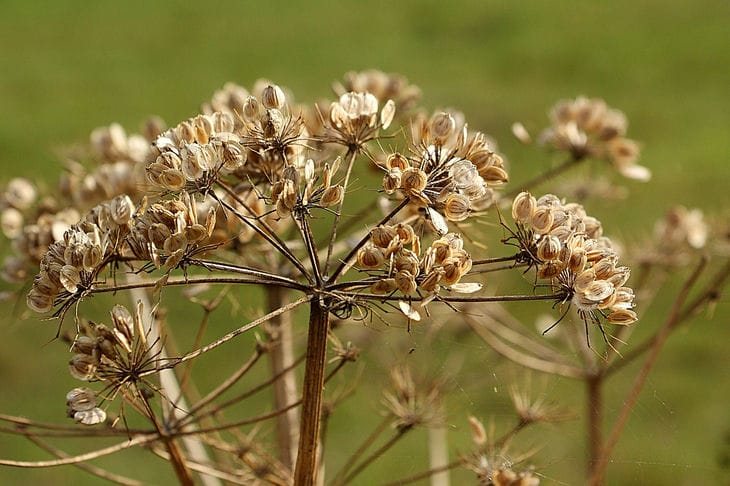How to clear a plot of Sosnowsky's hogweed: getting rid of a dangerous plant
This weed poses a great danger to a summer cottage, as it quickly and aggressively takes over new areas of land, preventing the development of the ecosystem in which it is located.
In areas where hogweed appears, many species of plants and fungi stop growing, and beneficial insects and animals leave such areas.
The greatest danger to the ecosystem is Sosnowsky's hogweed, as it quickly takes over large areas of land, blocking light from lower plants.
This species of hogweed contains poisonous juice, which causes severe burns and numerous blisters filled with liquid.
Another danger of hogweed is that each adult plant produces approximately 7,000-20,000 seeds. Once the seeds are ripe, they are easily carried over long distances by wind, water, on people's clothing, on animal fur, and on car wheels.

The main feature of these seeds is that they retain their germination capacity for up to 10 years.
Another feature of hogweed seeds is that when they fall into the ground, they release special substances that completely block the germination process of other plants.
Methods of struggle
If the first specimens of hogweed appear on the site, you need to immediately begin to destroy them, since this weed can quickly take over a significant part of the site.
The fibers of its hollow stems are very strong, so there is no point in trampling or breaking them. The plant will freely receive nutrition from the deformed stem, which means that the hogweed seeds will successfully ripen and fall into new areas of the earth.
Sosnowsky's hogweed secretes toxic juice, so before you begin to destroy this poisonous plant, you need to protect your eyes and exposed areas of the body with waterproof clothing made of thick material and other personal protective equipment. After the work is completed, you need to thoroughly wash the PPE, since drops of toxic juice may remain on their surface.
Agrotechnical measures
If the plants have ovaries and umbels-flowers, they should be cut off immediately with garden pruning shears or a very sharp knife. The stem tube can be left, as it will gradually dry out on its own.
Approximately 4 weeks after the first pruning of the umbrellas, you need to return to the same place and check the hogweed thickets, and if new umbrellas-flowers have appeared, they also need to be cut off, leaving only the tube.
If the hogweed has produced seeds, you need to carefully cut off the umbrellas, put them in one place and immediately burn them or bury them in a deep hole.
In the spring, it is recommended to additionally treat the area with buried umbrellas with herbicides to prevent weed seeds from sprouting.
It is not recommended to delay the issue of disposal of hogweed umbrellas, since rodents and large insects may periodically run past the pile of hogweed remains, which will carry the ripened weed seeds to other places.
Digging and cutting the roots gives good results. First, you need to dig up an adult hogweed, then cut all the roots of this plant with a well-sharpened shovel. The entire above-ground part of the hogweed must be transferred to a compost pit or sent to a dry, sunny place so that the plant dries out.
Young plants can simply be cut down with a bayonet shovel at the point where the roots begin to branch.
In the place where hogweed often appears, you can plant Jerusalem artichoke. This unpretentious plant, which has a powerful root system, will not only restrain the growth of hogweed, but also prevent soil erosion.
Herbicides
With the help of chemicals, even large thickets of hogweed can be quickly destroyed.
The main disadvantage of such preparations is their high toxicity. Incorrect use of herbicides will lead to the destruction of useful crops growing near hogweed. In addition, herbicides can negatively affect the composition of the soil.
Chemical treatment is carried out at the time when the hogweed has young leaves, but before flowering begins.
To control hogweed, it is recommended to use herbicides based on imazapyr, cloperalide, dicamba, sulfonylurea or glyphosate.
Using black film
Hogweed needs sunlight to grow and develop fully, and without it, the weed stops developing and dies after a while.
In the spring, young hogweed thickets should be covered with a thick black film. However, it should be remembered that not only the hogweed will die under the film, but also other plants that grow near the weed.
Earlier we talked about how to speed up the ripening of tomatoes .
